
Cover of the July 25, 1977 edition of TIME.
For Clive Campbell, better known as the legendary hip-hop pioneer DJ Kool Herc, the memory of what he witnessed on the chaotic streets of New York one steamy night in July 1977 remains all too fresh. After playing at a Police Athletic League charity basketball game on W. 183rd Street, Campbell and several friends left only to find themselves stumbling into a surreal scene of complete darkness.
Born and raised on the island of Jamaica, Campbell was no stranger to power outages. But this was different. “People were pouring out into the streets and running everywhere,” he remembers. To get home, Campbell hopped on his 10-speed bicycle.
“The cops were nowhere in sight and I saw a mob surround this electronics store. All you heard was, “One-two-three!’ And the gate came crashing down,” he says. “They didn’t even use a jackhammer. It was just with their hands. And then they all rushed inside.”
This July marks 40 years since a 25-hour blackout further crippled an already-beleaguered New York after widespread looting hit nearly 2,000 stores mostly in the city’s Black and Hispanic neighborhoods. The incident sparked a fiery national debate over race and class as more than 3,700 people were arrested during the disturbance that resulted in approximately $300 million in property damage.
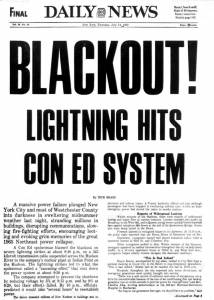 New York City Police Department data revealed that an overwhelming majority of those arrested were Black, constituting more than 65 percent, while about 30 percent were Latino and 4 percent were White.
New York City Police Department data revealed that an overwhelming majority of those arrested were Black, constituting more than 65 percent, while about 30 percent were Latino and 4 percent were White.
City Under Siege
On July 11, 1977, Charles Luce – then-chairman of Consolidated Edison Co. – said in a TV interview that a blackout in the city was unlikely. Two days later, lightning strikes tripped up several electrical transmission lines in upstate New York. After Con Ed failed to manually reduce the overload, the system shut down. Just shy of 9:30 p.m., the city fell into darkness.
And while there were many acts of benevolence, the most enduring image remains the massive vandalism inside the city’s poorest areas, from Bushwick in Brooklyn to the South Bronx. By the summer of 1977, New York was still in the throes of a massive fiscal crisis. A serial murderer dubbed the Son of Sam, who favored a .44-caliber revolver in his killing spree, was on the loose in a year when more than 120,000 incidents of violent crime was reported. Meanwhile, the city had lost some 650,000 jobs since 1960.
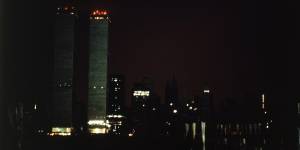
A barely visible World Trade Center in the midst of the blackout. (AP Photo/Dave Pickoff)
“There was a lot of anger in 1977,” noted Bruce Porter, a Columbia University professor who co-authored a Ford Foundation study on the blackout and related violence. “The looting was driven by the dispersal of that anger and the feeling that ‘we were owed something and now is our chance to get it.’”
The first reports of looting – which unfolded in multiple stages – happened within the first half-hour of the blackout. During the first 90 minutes, stores were struck by a wave of brake-ins. One crowd shattered the windows of the Ace Pontiac Company in the Bronx and stole 50 new cars. The vandalism then expanded as roving bands of teenagers either looted already exposed stores or forced their way into others. Clothing and sneakers were the fastest items to go.
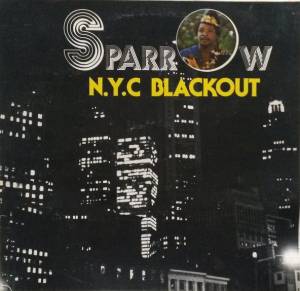
The 1977 blackout has sparked many films, TV documentaries and songs, including this 1978 album from iconic calypsonian The Mighty Sparrow.
And where were the cops? The initial absence of police, observers note, was partly due to an order issued by then-NYPD Police Commissioner Michael Codd, who called for officers to report to station houses in their residential areas. But like the storeowners, many of them lived in outer boroughs areas where looting was minimal.
Also fueling the situation was a simmering feud between the NYPD and then-Mayor Abraham Beame over proposed budget cuts that contributed to the sluggish response.
When the blackout struck, then-Congressman Herman Badillo (D-Bronx), who was among the half dozen candidates vying to become the Big Apple’s next mayor, raced to his district office. “People were breaking down gates, jumping into stores and taking as much as they could. It was disgraceful,” he says. “People saw a chance to get food-stuff and jewelry for nothing and they took it. The police had no plan to protect merchants.”
Elsewhere, longtime Brooklyn-based activist Jitu Weusi, witnessed gleeful bedlam as he drove along Fulton Street in Bedford-Stuyvesant around 3 a.m., before stopping in Bushwick.
“It all looked like a planned operation to me,” he argues. “You name it and it went. It wasn’t just some little TV sets. People were loading cases and cases onto trucks. They were only the muscles for someone else. Who knows where it all went?”
The extent of the damage across the city would not become clear until the next day. It was only then when New Yorkers – and the nation alike – saw televised images of the looting and the looted. And yet, many of those of neighborhoods had been under great distress for some time.
The deadly toxins of arson and neglect had completely gutted areas, producing rows of decimated buildings and rubble-strewn streets that resembled bombed-out war zones. “The South Bronx was allowed to burn deliberately and systemically as people in very influential places in this city accepted that as a good thing,” said Badillo.

Arson was just as widespread on the streets of the city’s impoverished neighborhoods during the blackout, as this ABC News footage shows.
Out of The Ruins
At the Bronen’s Music Store on Webster Avenue in the Bronx, owner Andrew Bronen, whose grandfather opened the business in 1915, recalled seeing his late father clean up after the looting. “The cash registers, the vintage guitars and saxophones were all gone,” he says. But his father had no desire to move. “He said that despite what happened, he loved the people. We decided to stay and rebuild.” But many storeowners were done as residents struggled to find accessible goods and services for months.
“A lot of people who woke up the next morning looked outside their windows and realized their community lost out,” says D.C. Congresswoman Eleanor Holmes Norton, former chairperson of the New York City Commission on Human Rights who lived in Harlem during the blackout.
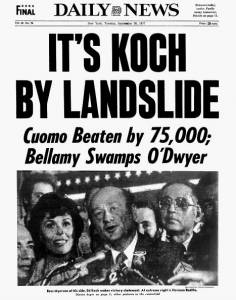
Sept. 20, 1977 edition of the New York Daily News. Fueled by a “law and order” platform, then-Congressman Ed Koch won the contentious 1977 mayoral primary and Nov. election, beginning the start of three terms. Koch would serve through Jan. 1990.
As a national debate over the state of America’s cities ensued in days and weeks that followed, race was a major flashpoint. “One of the misconceptions is about who riots in this country. In 1863, there was a ‘Draft Riot’ when Irish men went into the Black community and burned, pillaged and savaged for weeks. What was that about? Any knowledge we had of rioting was after being the victims of it for over a hundred years.”
From the most devastated areas of the blackout, there was so much yet to come. Hip-hop sprung forth, emerging as an industry all its own. But the same was true of the crack cocaine. Still, from out of the immediate ruins of 1977 came the rise of a number of still-enduring social justice organizations.
“Everyone left us to fend for ourselves,” remembered Harry DeRienzo, co-founder of Banana Kelly, a South Bronx housing development group. “We saw the emergence of tenant leaders, mostly women, who fought to improve things here.”
And in the Crown Heights section of Brooklyn, which also experienced extensive looting in the 1977 blackout, the Crown Heights Youth Collective – a youth-oriented social service group – will also mark its 40th anniversary this summer.
“The looting was a moment of pleasure that ruined many communities,” says Richard Green, who founded the group after serving two military tours in Vietnam. “We set out to fill a void that existed in the lives of our young people. And that work goes on.”
A version of this story (since updated) appeared on the cover of the July 18, 2007 edition of The Amsterdam News.
Below, a look at WABC-TV’s coverage on July 14, 1977.

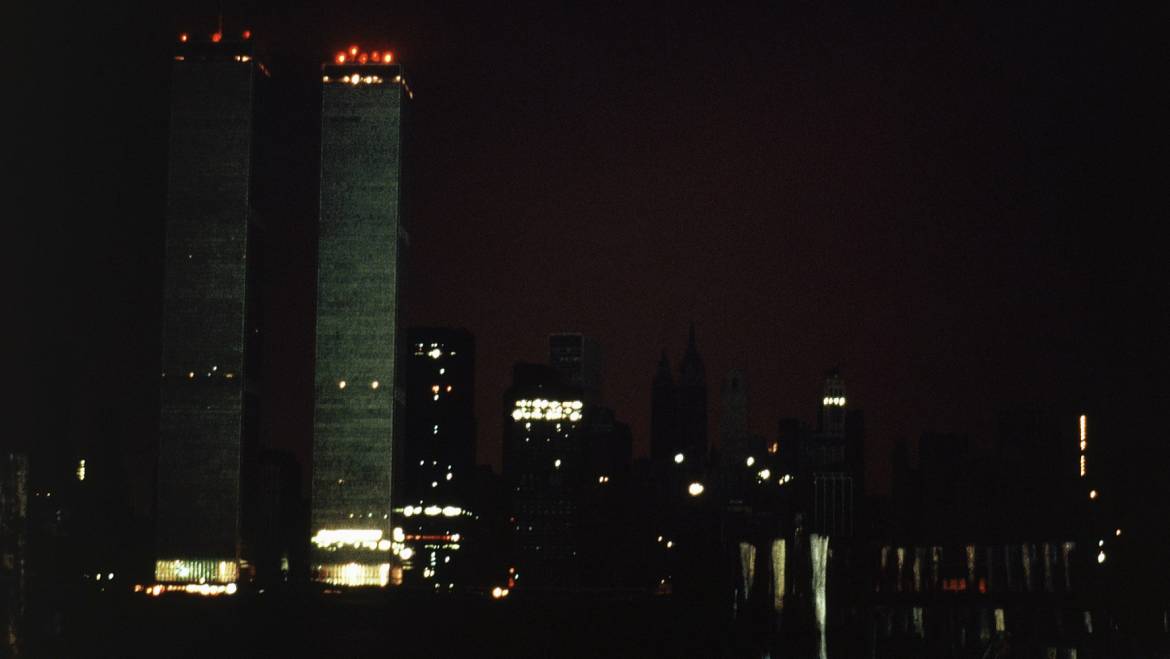
2 Comments
I will never forget that night. I was pregnant and scared for my son Mervin, who was in Wingate park.
l was worried for him and was wondering how he would find his way home in the dark. When I heard his voice after he came in through the door, I was so happy. Thank God I stayed home that night with all the looting that was going on. It was sad.
Had dinner in the West Village I, with Grand Mom and my five years old daughter ,,we stepped out to a very dark street ..I though it is only this area ..could not find my car ..finally I found it ..was a drive from hell all the way home ,,no traffic lights ..cars and people crossing at whelms ..particular difficult to see the black people ..was soo worried to hit somebody ..it took two hours to drive the 15 blocks to home .At home none of us were able to walk in the dark the 12 flights up ..we sat in the lobby for five hours ..nobody knew what was a;; about or when the light will come back . finally we decided to risk it and walk to the dark stairs ..it took us more than 90 minutes to reach our apartment in the 12th floor
Add Comment